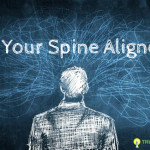Why Is Alignment Important?
The human body craves alignment. We work most efficiently when we are aligned. Ideally our bones should be supporting our weight (not our muscles) but when we lose normal alignment – the muscles pick up the slack which results in muscle strains, sprains, and tears. When we lose proper alignment we see joints begin to break down or wear out – due to uneven weight distribution.
Anyone who has ever driven and maintained an automobile for an extended period of time has likely dealt with an alignment problem. The effects of a simple curb nudge, fender-bender or direct collision may create a misalignment that is not immediately obvious. Our bodies are very much like automobiles – and we may not realize that our own alignment is off until an ankle sprain leads to knee trouble or the occasional ache develops into chronic pain or worse yet – we need a knee or hip replacement.
As chiropractors, we understand the human body is better able to deal with stressors when there is balance in the spine – allowing the nerve system to work free of any structural interference. The focus of chiropractic care is to keep the bones of the spine (vertebrae) in their proper relationships with each other, which enhances the function of the spine and nerve system in order to allow the body to fully express its maximum potential and work optimally.
When the vertebral joints lose proper positioning and alignment (structure), it leads to abnormal motion and movement – which affects how the brain communicates with the body (altering the firing pattern in the central nervous system = nerve interference). This altered communication can affect your entire body, even your immune system. Chiropractic care is designed to reduce this nerve interference, which then permits your body to assume its true, healthful vigor.
During the examination on your first visit to our practice, we use a number of tools and techniques to determine the presence and extent of any misalignments in your spine.
Bilateral scales– Two scales, set up side-by-side, determine if there are differences in weight distribution, between the left and right sides of your body.
Leg length tests– A contracted leg, causing one leg to appear shorter than the other can be a common sign of spinal misalignment.
Gait – We may have you walk as we notice any pelvic or spinal abnormalities that affect your stride or the way your heels strike the floor.
Range of Motion (Bending/Rotation) – Bending in different directions and at different angles can reveal spinal problems such as inflexibility or scoliosis. Restricted movement when turning your head to the right or left can be a significant clue that misalignments are present.
Posture – Checking your posture from the side can reveal a forward leaning head and other postural distortions. From behind, a high shoulder or hip may be noticed.
In the early, easiest-to-correct stages, spinal misalignments often produce no noticeable symptoms. Yet. A spinal checkup in our practice can reveal problem areas that we can address before they become headaches, back pain or more serious health issues.












